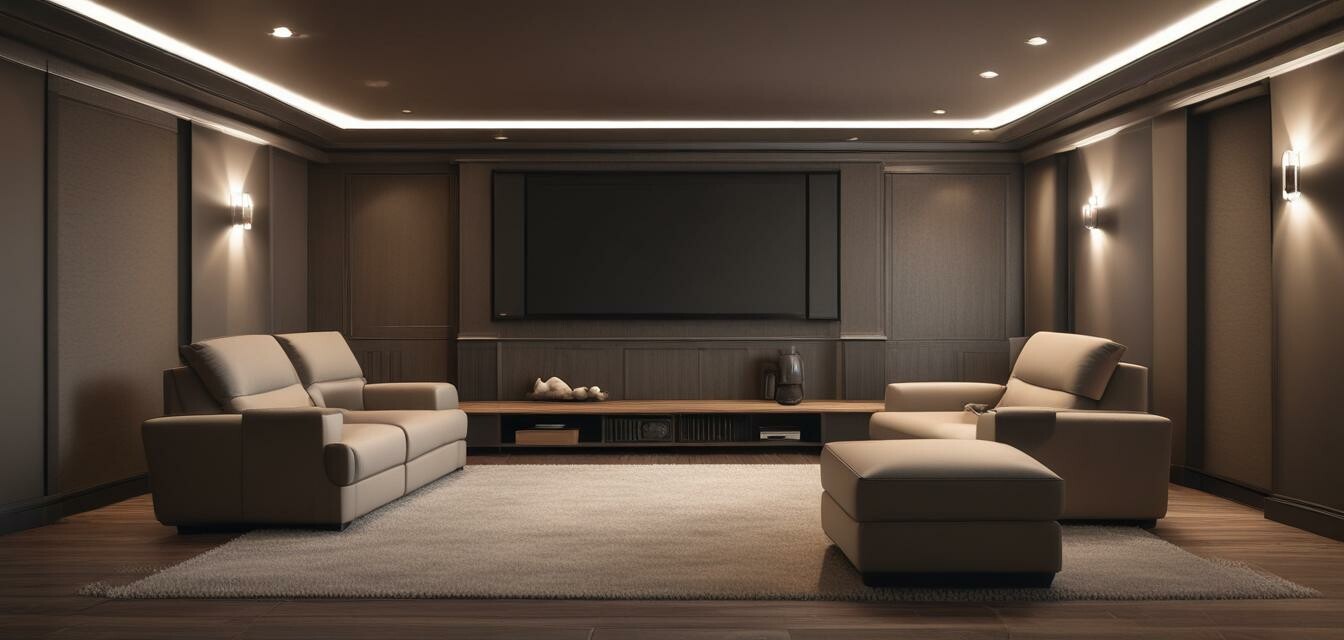
The trend towards modular home theater designs
- Modular designs offer flexibility and customization for individual needs.
- They can easily adapt to different space constraints and technology updates.
- Building a modular system enhances the viewing experience while maintaining aesthetics.
- Popular features include adjustable seating, soundbar integration, and smart home compatibility.
The world of home theaters is evolving, with an increasing interest in modular designs. These systems are becoming the preferred choice for many homeowners looking to create a customizable and flexible viewing experience. This article delves into the reasons behind the rising popularity of modular home theater designs, exploring their numerous benefits and how they cater to modern lifestyle needs.
Understanding modular home theater designs
Modular home theater systems consist of individual components that can be easily reconfigured, added, or removed based on user preferences. This adaptability allows homeowners to create a unique viewing environment that suits their specific needs and available space.
The evolution of home theater systems
Historically, home theaters were bulky and often fixed to one design, limiting the options for customization. The shift towards modular systems represents an important change, allowing for a balance between aesthetics and functionality. Here’s a brief overview of how home theater systems have evolved:
| Era | Design Features |
|---|---|
| 1990s | Traditional setups with large, stand-alone furniture and speakers. |
| 2000s | Integration of flat-screen TVs and simplified components, but still minimal modularity. |
| 2010s | Introduction of wireless technologies and more modular options, marking a significant shift. |
| 2020s | Dominance of smart home integration and fully customizable modular designs. |
Benefits of modular home theater designs
There are several compelling advantages to adopting modular home theater systems:
- Flexibility: Modular systems allow homeowners to easily adapt to new technology or space requirements without starting from scratch.
- Customization: From seating arrangements to sound systems, users can tailor every aspect of their theater to their preference.
- Space Efficiency: These designs can fit into almost any living space, optimizing areas that may seem too small for traditional setups.
- Future-Proofing: As technology advances, modular components can be swapped out or upgraded, ensuring longevity in the design.
Pros
- Enhanced viewing experience with personalized setups.
- Easy upgrades and changes to keep pace with technological advancements.
- Possibility of incorporating various audio formats.
- Aesthetically pleasing designs blending with modern home decor.
Cons
- Initial costs can be higher depending on chosen components.
- Potential complexity in setup if too many components are included.
- Users may need to invest in additional accessories for complete integration.
Popular modular features in home theater designs
With modular systems gaining traction, here are some of the most sought-after features:
| Feature | Description |
|---|---|
| Adjustable Seating | Customizable options ensure comfort and optimal viewing angles. |
| Wall-Mounted Screens | Maximize floor space and lend a sleek look to the room. |
| Sound Systems | Integration of advanced soundbar systems for a rich audio experience. |
| Smart Home Integration | Seamless control through smart devices, allowing full customization and convenience. |
Key considerations for modular home theater setups
When designing a modular home theater, there are several elements to keep in mind:
- Space Planning: Assess your designated area to determine the best layout for optimal viewing.
- Technology Compatibility: Ensure all components will work together efficiently.
- Aesthetic Appeal: Choose a design that complements your home’s decor.
- Budget: Determine a budget that allows for quality components without overspending.
Conclusion
The trend towards modular home theater designs reflects a greater demand for customization and flexibility in audio-visual experiences. Creating a home theater that meets personal desires has never been easier thanks to modular systems. Explore your options, incorporate modern technologies, and enjoy a setup tailored just for you. For more information on high-end audio systems, consider visiting our Speakers & Sound Systems category. Stay up-to-date with the latest trends by checking out our News and Trends section as well!

